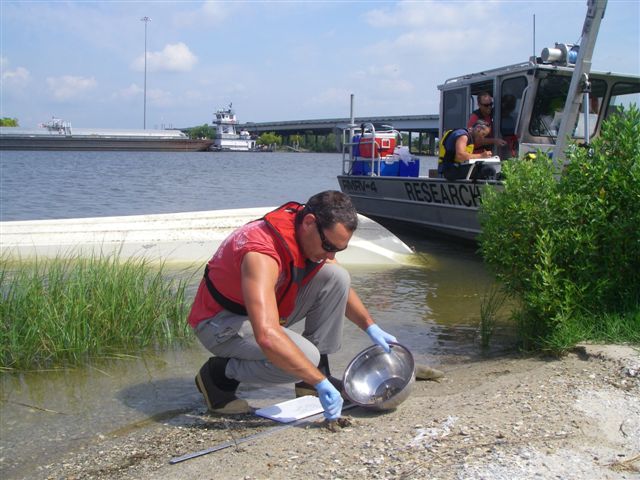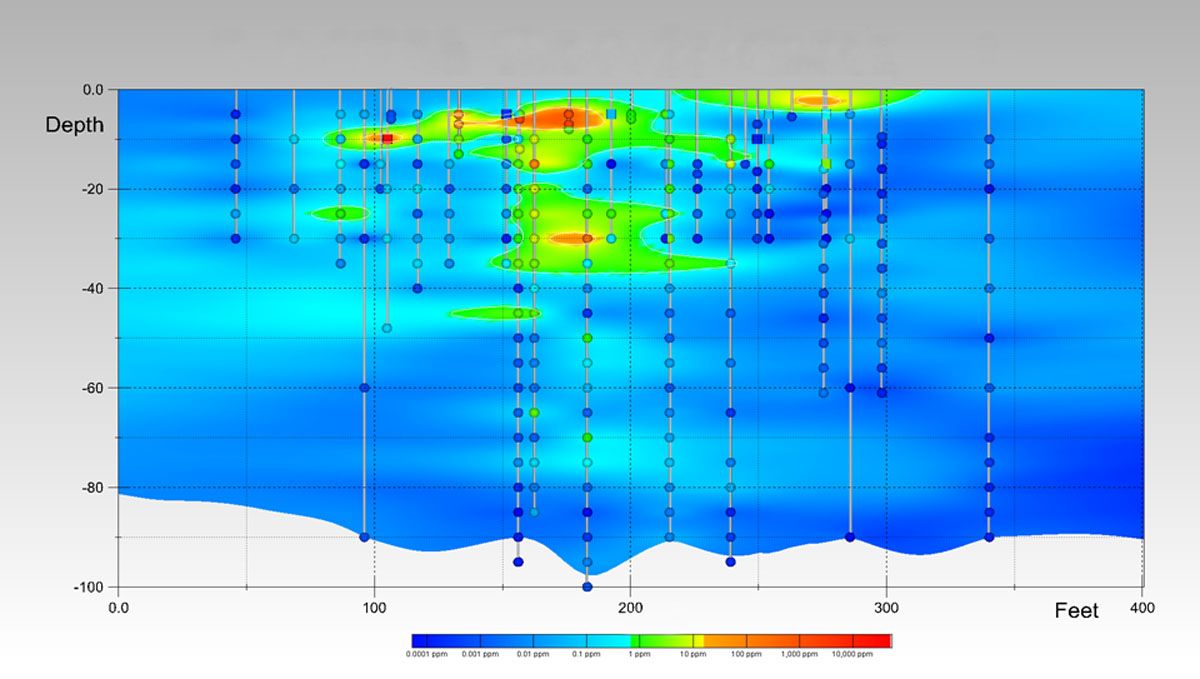
M.S., Oceanography, Oregon State University, 1982
B.S., Biology, Union College, 1976
American Statistical Association
R. Dreas Nielsen Associate of Integral (206) 957-0311 Seattle, WA rnielsen@integral-corp.com
Mr. Dreas Nielsen is a senior science advisor at Integral Consulting Inc., who specializes in quantitative analysis of environmental data. His scientific expertise is principally in the areas of sediment contamination, chemical bioaccumulation, biological effects of contaminants, and chemical transport and fate. His approach to scientific topics stresses analytical and quantitative methods, with an emphasis on computer applications. During his 36 years of experience, Mr. Nielsen has performed and managed the collection and analysis of biological, physical, chemical, and geographic data from sites throughout the United States. Potential impacts at these sites were associated with heavy manufacturing, petrochemical manufacturing, wood treatment, wood pulp and paper production, shipbuilding, mining, and smelting. Mr. Nielsen’s experience with these sites covers a broad range of contaminants, media, pathways, and exposures. Throughout this diverse range of conditions, he has collected, analyzed, modeled, and presented data to support ecological and human health risk assessments, RI/FSs, natural resource damage assessments, and cost allocation. Mr. Nielsen’s technical expertise includes data management, statistical analysis, integration of database and geographic information systems, mathematical modeling, programming, and other quantitative methods. Mr. Nielsen has designed and developed numerous databases customized to meet specialized needs of projects and clients and has developed project-specific web pages, including GIS-based interfaces, to facilitate broad and straightforward access to project data and analyses.


- Natural Resource Damage Assessment
- Ecological Risk Assessment
- Contaminated Sediments
- Forensics
- Data Management
- Site Assessment
- Environmental Impact Assessment
- Litigation Support
Natural Resource Damage Assessment
Ecological Risk Assessment
Contaminated Sediments
Forensics
Data Management
Site Assessment
Environmental Impact Assessment
Litigation Support
Nielsen, D. 2024. A distance metric for ordinal data based on misclassification. Journal of Innovative Applied Mathematics and Computational Sciences 3(2):156–161. https://doi.org/10.58205/jiamcs.v3i2.83
Pastorok, R.A., M.K. Butcher, and R.D. Nielsen. 1996. Modeling wildlife exposure to toxic chemicals: trends and recent advances. Hum. Ecol. Risk Assess. 2(3):444–480.
Pastorok, R.A., R.D. Nielsen, and M.K. Butcher. 1996. Future directions in modeling wildlife exposure to toxic chemicals. Hum. Ecol. Risk Assess. 2(3):570–579.
Miller, C.B., and R.D. Nielsen. 1988. Development and growth of large, Calanid copepods in the Ocean Subarctic Pacific, May 1984. Progr. Oceanogr. 20:275–292.
Whitehead, K., D. Nielsen, B. Sackmann, M. Macrander, G. Revelas, and D. Preziosi. 2020. Determination of sediment impacts due to exploratory oil operations using likelihood based statistics. Poster presentation at the Ocean Sciences Meeting. Co-sponsored by the American Geophysical Union, the Association for the Sciences of Limnology and Oceanography, and The Oceanography Society, San Diego, CA. February 16–21.
Sackmann, B.S., E. Revelas, K. Whitehead, D. Nielsen, C. Jones, and J. Durda. 2019. Using artificial intelligence and computer vision for cost-effective environmental monitoring and site characterization. Poster presentation at Tenth International Conference on the Remediation and Management of Contaminated Sediments, New Orleans, LA. February 11–14.
Whitehead, K., J. Durda, and D. Nielsen. 2019. Testing the applicability of BSAFs: A case study from the Berry’s Creek Study Area Superfund Site. Poster presentation at Tenth International Conference on the Remediation and Management of Contaminated Sediments, New Orleans, LA. February 11–14.
Whitehead, K., and D. Nielsen. 2018. Determination of chemicals of concern by association with likelihood based evidence for biological impairment. Poster presented at the Ocean Sciences Meeting. Co-sponsored by the American Geophysical Union, the Association for the Sciences of Limnology and Oceanography, and The Oceanography Society, February 11–16, Portland, OR.
Nielsen, D. 2015. Quantitative weight of evidence for sediment recovery in the Portland Harbor Superfund site. Platform presentation. 36th Annual Meeting of the Society of Environmental Toxicology and Chemistry, November, Salt Lake City, UT.
Nielsen, D., J. Sampson, K. Whitehead, and J. Durda. 2015. Quantitative integration of multiple lines of evidence: The use of likelihood ratios in benthic community risk assessments. Poster Presentation, Eighth International Conference on Remediation of Contaminated Sediments, January 12–15, New Orleans, LA.
Nielsen, D., M. Aldea, and G. Palushock. 2009. Sediment transport assessment in a large, tidal river (Portland Harbor, Oregon). Platform Presentation, Fifth International Conference on Remediation of Contaminated Sediments, February 2–5, Jacksonville, FL.
Nielsen, D., and J.D. Germano. 2009. A multinomial exact test for interpretation of sediment profile image data. Poster Presentation, Fifth International Conference on Remediation of Contaminated Sediments, February 2–5, Jacksonville, FL.
Co-instructed one-day course on environmental forensics for CLE credit and New Jersey LSRP credentials, 2018, 2019
Workshop on U.S. Seawater Vaporization: Getting to Resolution. An evaluation of the approaches used to predict potential impacts of open loop LNG vaporization systems on fishery resources of the Gulf of Mexico. Houston, TX. January 2006.
Environmental Technologies Panel Meeting. Sediment assessments for remedial investigations. National Shipbuilding Research Program. Seattle, WA. October 2005.
Society of Wetland Scientists 25th Annual Conference. Restoration of the Mesopotamian marshlands: Applications of hydrodynamic models. Seattle, WA. July 2004.
Sediment Management Workgroup Members Meeting. Use and extension of the sediment quality triad approach at working shipyards. Seattle, WA. September 2004.


